|

On eBay Now...
1778 American General William Heath’s Letter to His Prisoner Gen. Burgoyne For Sale

When you click on links to various merchants on this site and make a purchase, this can result in this site earning a commission. Affiliate programs and affiliations include, but are not limited to, the eBay Partner Network.

1778 American General William Heath’s Letter to His Prisoner Gen. Burgoyne:
$3450.00
1778 American General William Heath’s Letter to His Prisoner Gen. Burgoyne Continental Army General William Heath Corresponds With American Prisoner British Major General John Burgoyne
WILLIAM HEATH (1737-1814). American Revolutionary War Continental Army Major General, reprimanded by George Washington for his handling of the attack on Fort Independence, later promoted Commanding the Eastern Department and in the Hudson Valley.
February 10, 1778-Dated Revolutionary War Period, Excellent Content Autograph Letter Signed, “W Heath”, Head Quarters Boston, to British Commanding General John Burgoyne being held as an American prisoner of war after his surrender at the Battle of Saratoga, Choice Very Fine. This historic Letter measures 7.75” x 12.5”, 1 page, one short fold split and one reinforcement hinge opposite on the blank reverse, nicely written in rich brown ink on clean watermarked laid period paper where General Heath provides a Parole Pass to visit Congress, writing to Lt. General Burgoyne, in full:“Head Quarters Boston, - Febry. 10th 1778Sir --- Your favor this date came duly to hand, I have had a parole for Mr. Wilford which he will please to sign and leave in the hands of Col. Kingston until Col. Keith comes up tomorrow. Mr. Peck who is to attend Mr. Wilford will be at Cambridge by eight o\'clock tomorrow morning with the Passports, ect. - I am - Sir your Abt. Servt - (Signed) W Heath”. Noted recipient to: “Lt Genl Burgoyne” at lower left. Docket on the blank reverse reads, in full: “To Genl Burgoyne enclosing a Parole for Mr. Willford to go to Congress - Feby 10, 1778”.There is a known recorded response from General “Johnny” Burgoyne documented in "Naval Documents of the American Revolution: American theatre: Jan. 1, 1778 - Mar. 31, 1778", page 709. Israel Keith was an Aide-de-Camp to Major General William Heath and became deputy adjutant in Boston, where he kept watch over a Prison Camp that detained British Army officers and soldiers captured in battle, Lt. Col. Kingston was Adjutant-General to Burgoyne.General Burgoyne fought two small battles near Saratoga but was then surrounded by American forces and, with no relief in sight, surrendered his entire British army of 6,200 men on October 17, 1777. His surrender, known as the says historian Edmund Morgan, "was a great turning point of the war, because it won for Americans the foreign assistance which was the last element needed for victory”.
Battle of Saratoga: Having convinced King George III and his government of Carleton\'s faults, Burgoyne was given command of the British forces charged with gaining control of Lake Champlain and the Hudson River valley.The plan, largely of his own creation, was for Burgoyne and his force to cross Lake Champlain from Quebec and capture Ticonderoga before advancing on Albany, New York, where they would rendezvous with another British army under General Howe coming north from New York City, and a smaller force that would come down the Mohawk River valley under Barry St. Leger. This would divide New England from the southern colonies, and, it was believed, make it easier to end the rebellion.From the beginning, Burgoyne was vastly overconfident. Leading what he believed was an overwhelming force, he saw the campaign largely as a stroll that would make him a national hero who had saved the rebel colonies for the crown.Before leaving London, he had wagered Charles James Fox 10 pounds that he would return victorious within a year.[citation needed] He refused to heed more cautious voices, both British and American, that suggested a successful campaign using the route he proposed was impossible, as the failed attempt the previous year had shown.Underlining the plan was the belief that Burgoyne\'s aggressive thrust from Quebec would be aided by the movements of two other large British forces under Generals Howe and Clinton, who would support the advance. However, Lord Germain\'s orders dispatched from London were not clear on this point, with the effect that Howe took no action to support Burgoyne, and Clinton moved from New York too late and in too little strength to be any great help to Burgoyne.Burgoyne\'s march on Albany June-October 1777: As a result of this miscommunication, Burgoyne ended up conducting the campaign single-handedly. He was not yet aware that he would not be gaining additional support, and was still reasonably confident of success. Having amassed an army of over 7,000 troops in Quebec, Burgoyne was also led to believe by reports that he could rely on the support of large numbers of Native Americans and American Loyalists who would rally to the flag once the British came south. Even if the countryside was not as pro-British as expected, much of the area between Lake Champlain and Albany was underpopulated anyway, and Burgoyne was skeptical any major enemy force could gather there.The campaign was initially successful. Burgoyne gained possession of the vital outposts of Fort Ticonderoga (for which he was made a lieutenant-general) and Fort Edward, but, pushing on, decided to break his communications with Quebec, and was eventually hemmed in by a superior force led by American Major General Horatio Gates. Several attempts to break through the enemy lines were repulsed at Saratoga in September and October 1777. His Aide-de-camp Sir Francis Clerke was killed on 15 October.On 17 October 1777, Burgoyne surrendered his entire army, numbering 5,800. This was the greatest victory the American forces had up to that point in the Revolutionary War, and it proved to be the turning point in the war, as France entered into an alliance with the American Patriots
Item Number: 109511 ADD Early_American_sales to your list of FAVORITE SELLER VIEW Other sale Items offered by Early_American_sales Complete Table of Contents, Current Offerings and Additional Images
can be found at Early American History sales online
Over 1,000 items currently online !

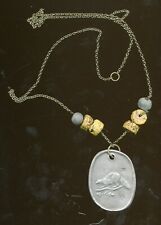
1778 HUDSON BAY Beaver FUR TRADE ERA, Native American Necklace $320.00
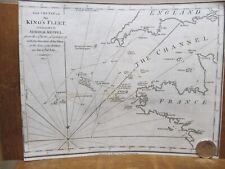
Map of the Cruise of the King's Fleet 1778 American Revolutionary War $35.00
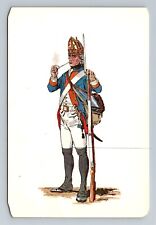
Private 1778 Fusilier Regiment von Lossberg American Revolution Postcard $5.64

Officer, 1778, Saddle River, NJ, USA - #14277 $5.00
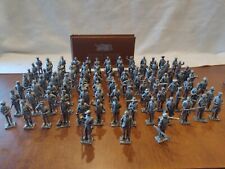
Franklin American Military Sculpture Collection - BUILD YOUR OWN LOT $6.00
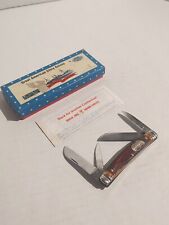
Boker Tree Great American Story #1778 "Remember the Maine" orig. box--1275.23 $42.00
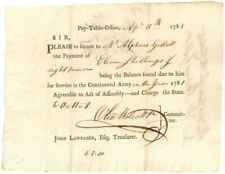
Pay Order Signed by Oliver Wolcott Jr. - 1780's dated War Payment Order for Serv $195.00
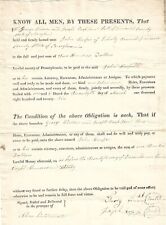
Bonded Revolutionary War Veteran Once Part Of Washington's Flying Camp 1st PA $275.00
|